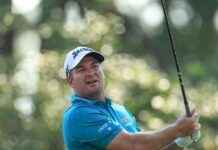The last hours before reaching the finish line in Genoa became a game of patience for the sailing fleet of the 14th Ocean Race, which had shrunk to three boats. On Tuesday, Boris Herrmann’s team Malizia and its competitors Biotherm and Holcim-PRB bobbed in light winds towards the Italian port in a completely different way to the often stormy six stages across the seven seas before. It was the quiet end after a 32,000 nautical miles (about 60,000 kilometers) long and almost 100-day battle against the forces of nature, against storms and waves.
For Herrmann, the result of the seventh stage was secondary anyway. Nothing would change at his third place in the overall standings. Due to the collision between Team Guyot and the US team 11th Hour Racing, the jury will decide on the final occupation of the Ocean Race podium on Thursday in Genoa after hearing all teams.
The 42-year-old circumnavigator from Hamburg took stock even before reaching the finish line. And it turned out positive. Although he was not victorious, he was very satisfied. “It was a great team experience. We harmonized very well and didn’t make a lot of mistakes,” said Herrmann. The Cape Horn royal stage from Cape Town to Itajá will remain unforgotten for the South Sea lover.
“I have long dreamed of taking part in the Ocean Race and completing this historically longest, unbelievable stage through the Southern Ocean,” said Herrmann. “The crowning glory was that after all the difficulties we had at the beginning, we were not only able to finish it, but also to win it.”
Despite a crack at the top of the mast and a daring repair operation at a height of 28 meters at sea, his team ultimately came out on top. Shortly before the finish, crew member Rosalin Kuiper was also injured. The only woman in the Ocean Race fleet to complete all stages had fallen off her bunk.
Imoca yachts were used for the first time in this edition of the round-the-world regatta. Herrmann certifies that the boats, which are up to 18 meters long, have a promising future in the Ocean Race. Five boats formed the starting field. “The Imocas are here to stay. They have proven themselves strong. There were almost no negative surprises,” he said.
Mast breaks have also occurred in previous races. The two broken masts of Team Holcim-PRB and Team Guyot on the fourth stage are not due to “major design flaws” but to material failure of individual components. “Imoca masts are very solid,” says the five-time circumnavigator.
Herrmann describes his own boat “Malizia – Seaexplorer”, which, after further regattas in 2024/25 with the Vendée Globe, is to carry him solo and non-stop around the world, as “good”. “We still don’t quite understand how to do everything perfectly, because it takes a long time to learn with a new boat. But the ship is also good in light winds, no heavier than the others.”
Herrmann sees himself well prepared for his second Vendée Globe launch: “Honestly, I wouldn’t even consider starting with any of the other ships at the Vendée Globe.”
The family man can also very well imagine another ocean race campaign: “We would like to be there again. We can’t announce an official campaign yet, but I would draw the tentative interim conclusion that we will very, very likely be highly motivated to get back to the start.”
The 15th Ocean Race will take place in 2026/27. It is to be expected that the number of participants could double by then in reliable alternation with the one-handed adventure Vendée Globe for the Ocean Race. In addition, Kiel could be added as a new stage port after the successful fly-by. Herrmann’s verdict: “Kiel is predestined for this.”
For the battered “Guyot” co-skipper Robert Stanjek, the flying visit to Kiel in early June in front of thousands of spectators was definitely the best memory of the Ocean Race. “That’s the i-point of the race,” said the Berliner at the time. Unlike Herrmann, he did not see the approach to Genoa after his collision with 11th Hour Racing shortly after the start of the seventh stage.


















